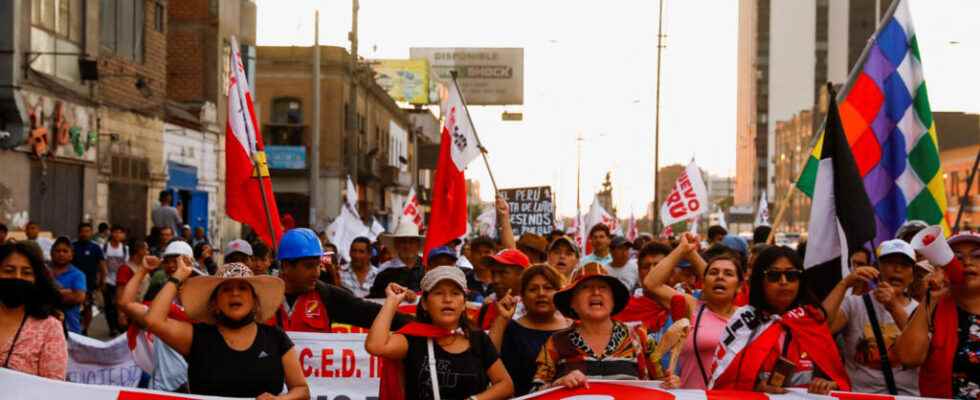42 people have died in the last weeks of protests. The demonstrators are still demanding the resignation of President Dina Boluarte, the dissolution of Congress and immediate elections. In response to these demonstrations, which have been taking place since January 4, the state of emergency has applied in several regions of the country since Sunday.
With our correspondent in Lima, Juliette Chaignon
The government is thus extending in certain regions the national state of emergency which has been in place for a month.
Are now concerned, for 30 days, the capital Lima and the port of Callao, three provinces and the departments of Cusco and Puno in the south of Peru. This is where the demonstrations have been the most intense for almost two weeks. A hundred roads are still blocked.
The state of emergency therefore allows the State to send the army to lift the roadblocks. The measure also makes it possible to restrict, if necessary, the movements of the inhabitants, the freedom of assembly. In Puno, in the southeast, residents are instructed to stay at home between 8 p.m. and 4 a.m. unless waived.
Despite this, thousands of demonstrators in Peru converged on Lima to protest en masse there on Monday. At least three thousand people from Andahuaylas (southeast), one of the epicenters of the demonstrations in December, were preparing on Sunday afternoon to go in vehicles and trucks to the Peruvian capital, RPP radio reported, quoted by the AFP.
According to recent polls, 71% of Peruvians disapprove of President Dina Boluarte’s policy. 88% oppose Congress. And half the population identifies with the protesters. It is less than in December.
Dina Boluarte repeated on Saturday that she would not give up. She calls the protesters ” small groups of violent agitators and seems to ignore the social demands of the protests.
(With AFP)
